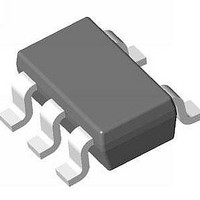S-8550AA-M5T1G Seiko Instruments, S-8550AA-M5T1G Datasheet - Page 8

S-8550AA-M5T1G
Manufacturer Part Number
S-8550AA-M5T1G
Description
IC, SYNC STEP-DOWN REGULATOR, SOT-23-5
Manufacturer
Seiko Instruments
Datasheet
1.S-8550AA-M5T1G.pdf
(31 pages)
Specifications of S-8550AA-M5T1G
Primary Input Voltage
5.5V
No. Of Outputs
1
Output Voltage
4V
Output Current
600mA
No. Of Pins
5
Operating Temperature Range
-40°C To +85°C
Operating Temperature Min
85°C
Input Voltage
5.5 V
Duty Cycle (max)
100 %
Maximum Operating Temperature
+ 85 C
Mounting Style
SMD/SMT
Package / Case
SOT-23-5
Minimum Operating Temperature
- 40 C
Rohs Compliant
Yes
Lead Free Status / RoHS Status
Lead free / RoHS Compliant
Lead Free Status / RoHS Status
Lead free / RoHS Compliant
Available stocks
Company
Part Number
Manufacturer
Quantity
Price
Company:
Part Number:
S-8550AA-M5T1G
Manufacturer:
SEIKO
Quantity:
230
Part Number:
S-8550AA-M5T1G
Manufacturer:
SII/精工
Quantity:
20 000
8
STEP-DOWN, BUILT-IN FET, SYNCHRONOUS RECTIFICATION, PWM CONTROL SWITCHING REGULATORS
S-8550/8551 Series
Operation
1. Synchronous rectification PWM control step-down switching regulator
2. Soft-start function
3. Shutdown pin
1.1 Synchronous rectification
1.2 PWM control
The soft-start circuit built in the S-8550/8551 Series controls the rush current and the overshoot of the output
voltage when powering on, the ON/OFF pin is switched from the “L” level to the “H” level, or the UVLO operation
is released. A reference voltage adjustment method is adopted as the soft-start method.
This pin stops or starts step-up operations.
Switching the shutdown pin to the “L” level stops operation of all the internal circuits and reduces the current
consumption significantly. DO NOT use the shutdown pin in a floating state because it is not pulled up or
pulled down internally. DO NOT apply voltage of between 0.3 V and 0.9 V to the shutdown pin because
applying such a voltage increases the current consumption. If the shutdown pin is not used, connect it to the
VIN pin.
The synchronous rectification method lowers voltage drop to greatly reduce power dissipation since an Nch
power MOS FET, having resistance much lower than conventional switching regulators, is used.
In conventional switching regulators, current flows in the diode connected between the GND and CONT pins
when the Pch power MOS FET is off. The forward drop voltage (V
to 0.7 V, so the power dissipation used to be very large. Synchronous rectification ultra-low resistance Nch
transistors repeat on and off, in synchronization with the operation of the Pch driver, in the reverse cycle of
the Pch driver. Moreover, the built-in P and N through prevention circuit helps much reduction of power
consumption during operation.
The S-8550/8551 Series is a switching regulator using a pulse width modulation method (PWM) and features
low current consumption.
In conventional PWM control switching regulators, pulses are skipped when the output load current is low,
causing a fluctuation in the ripple frequency of the output voltage, resulting in an increase in the ripple
voltage.
In the S-8550/8551 Series, the switching frequency does not change, although the pulse width changes from
0% to 100% corresponding to each load current. The ripple voltage generated from switching can thus be
removed easily using a filter because the switching frequency is constant.
Shutdown Pin
ON/OFF
“H”
“L”
Figure 8
CR Oscillation Circuit
Operates
Stops
Table 7
VIN
VSS
Seiko Instruments Inc.
Output Voltage
Set value
Hi-Z
f
) of such diodes is large, between 0.3 V
Rev.4.0
_00


















